Welcome to the world of low-maintenance, low-water landscaping, where the beauty of your garden doesn’t have to come at the cost of endless hours of upkeep or a hefty water bill. Whether you’re a novice just starting to explore the joys of gardening or a seasoned pro looking to simplify your routine, our guide is here to unlock the secrets of a lush, thriving landscape with minimal fuss.
Imagine a garden that mirrors the splendor of nature while aligning with sustainable practices—it’s not just a dream, it’s entirely achievable! Through the thoughtfully selected ideas in this guide, you’ll discover not only how to conserve water but also how to create an oasis that demands less of your time, leaving more space for you to enjoy the fruits of your labor. Get ready to embrace the satisfaction and serenity that comes with a flourishing garden, knowing that with these strategies, success is within your reach.
Choose Drought-Resistant Plants
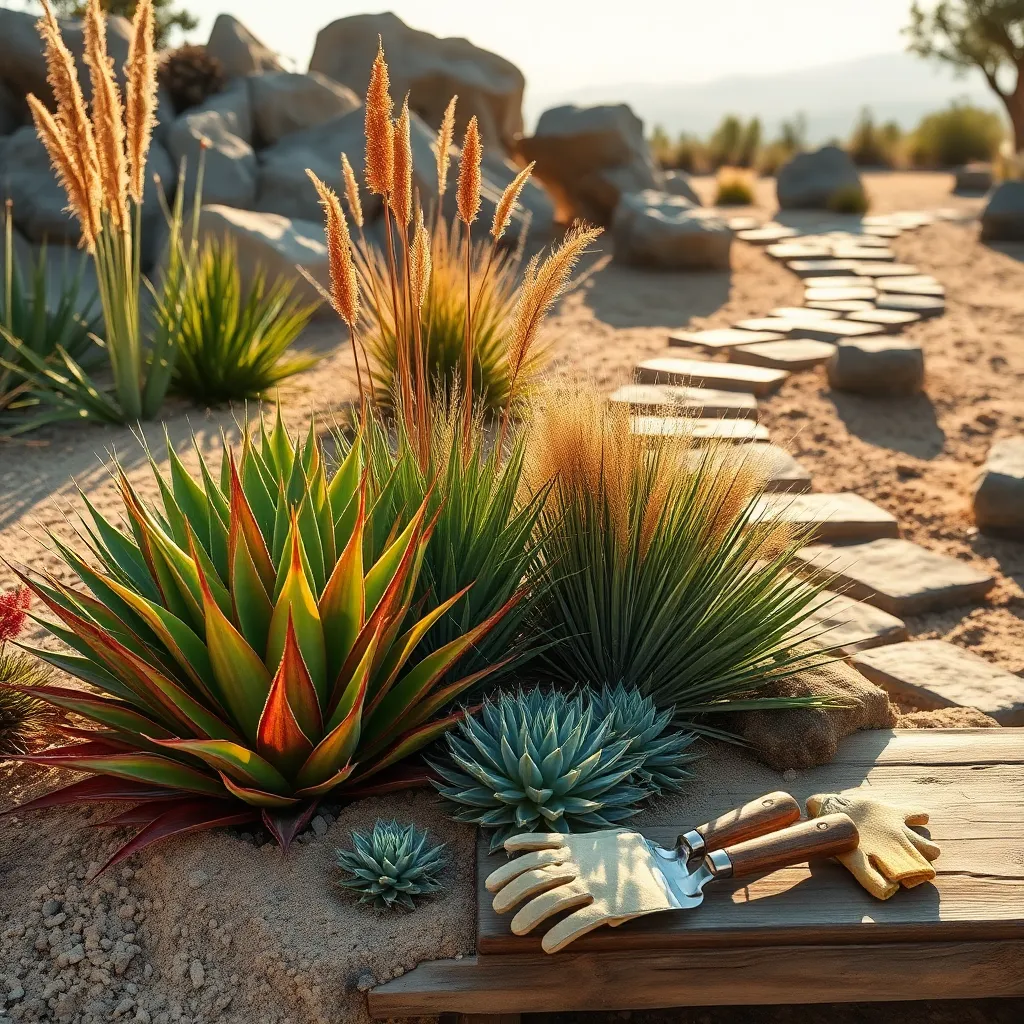
Choosing drought-resistant plants is a vital step in creating a low-maintenance landscape. These plants are specially adapted to survive with minimal water, making them perfect for water-conscious gardeners.
Start by selecting native plants, as they are naturally suited to your local climate and soil conditions. Plants such as lavender, succulents, and coneflowers are excellent choices due to their low water needs and resilience.
When planting these drought-tolerant species, ensure you use well-draining soil to prevent root rot, a common issue in poor-draining conditions. Amending your garden bed with sand or gravel can enhance drainage, further supporting plant health.
For beginners, incorporating a layer of mulch around the base of your plants can help conserve moisture and suppress weeds. Advanced gardeners might consider installing a drip irrigation system, which delivers water directly to the roots and minimizes evaporation.
Incorporate Gravel or Stone Mulch
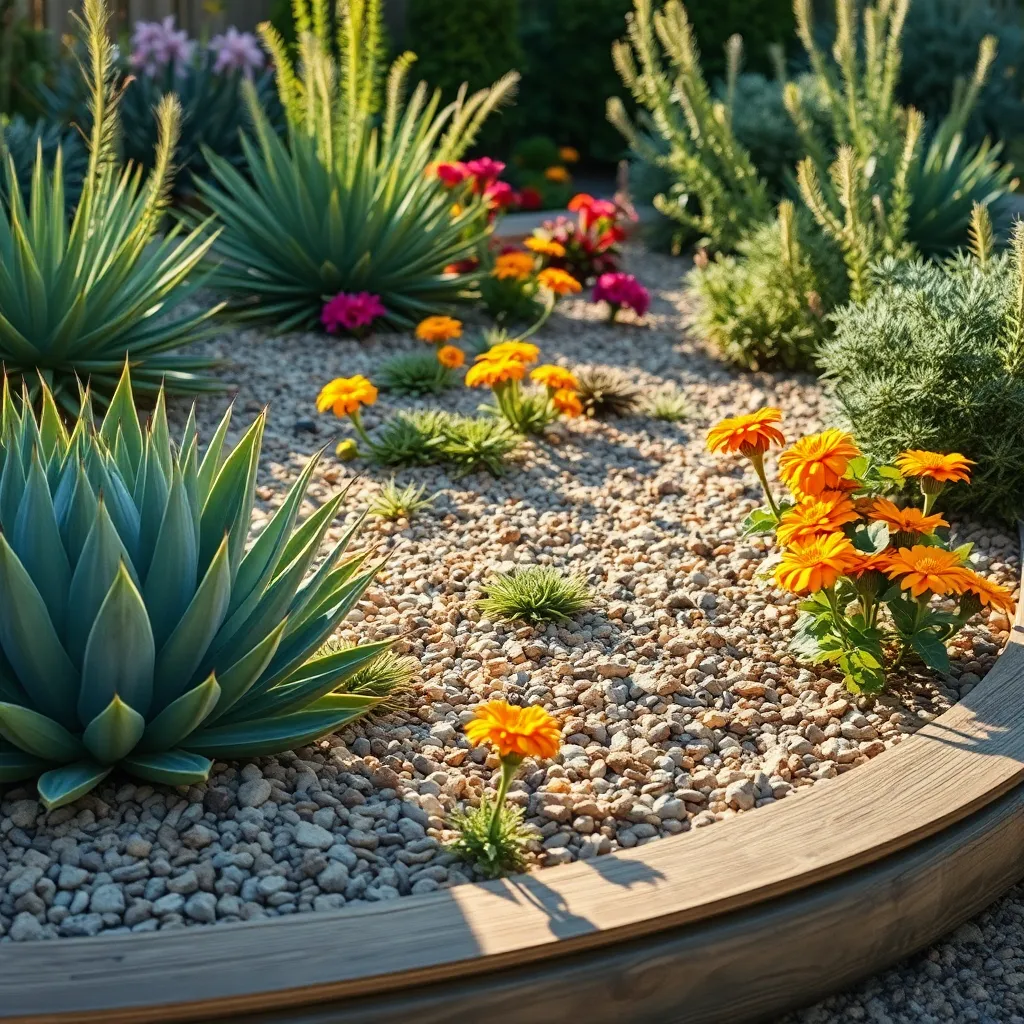
Incorporating gravel or stone mulch into your garden offers a low-maintenance solution that reduces water usage. These materials help suppress weeds and retain soil moisture, which is invaluable in drought-prone areas.
Gravel and stone mulch create a striking visual contrast with your plants while enhancing drainage. Select stones that complement the color palette of your garden for a cohesive look, and ensure they are laid thickly enough to cover the soil completely.
For beginners, it’s important to lay landscape fabric beneath the gravel to prevent weed growth effectively. Advanced gardeners might opt for a combination of larger stones with smaller gravel to create texture and improve water distribution.
Consider using stone mulch around succulents and cacti, which thrive with minimal water and well-drained soil. Ensure your soil is well-aerated and sandy before applying mulch, as these plants require excellent drainage to prevent root rot.
Install Drip Irrigation Systems

Drip irrigation systems are an excellent way to efficiently water your garden with minimal effort. By delivering water directly to the plant roots, you can significantly reduce water waste and ensure your plants receive the moisture they need.
Unlike traditional watering methods, drip irrigation can save up to 50% more water by minimizing evaporation and runoff. To install a system, start by planning your layout, ensuring the tubing reaches the base of each plant you wish to water.
Use a timer with your drip system to automate watering schedules, making it perfect for busy gardeners or those who travel frequently. Set the timer to water in the early morning or late evening to further reduce evaporation and allow the soil to absorb moisture efficiently.
Installing a filter and pressure regulator in your system will help avoid clogs and ensure even water distribution. Regularly check emitters for clogs, especially if you have hard water, to maintain consistent water flow and plant health.
Create Rock Gardens for Interest

Rock gardens offer a visually appealing and low-maintenance landscaping option that thrives in dry conditions. By strategically placing rocks and selecting drought-tolerant plants, you can create a beautiful and sustainable garden feature that requires minimal upkeep.
Start by choosing a sunny location with well-draining soil, as most rock garden plants prefer these conditions. If your soil is heavy or clay-like, consider amending it with sand or gravel to improve drainage, ensuring your plants’ roots don’t sit in water.
Select plants that thrive in rocky environments, such as succulents, sedums, and alpine plants. These species are not only drought-tolerant but also add texture and color to your garden throughout the year.
When placing rocks, aim for a natural look by varying the sizes and partially burying them to mimic natural outcrops. Group plants around these rocks to create microclimates that help retain moisture and provide some shade, benefiting your plants’ growth.
Opt for Native Plant Varieties
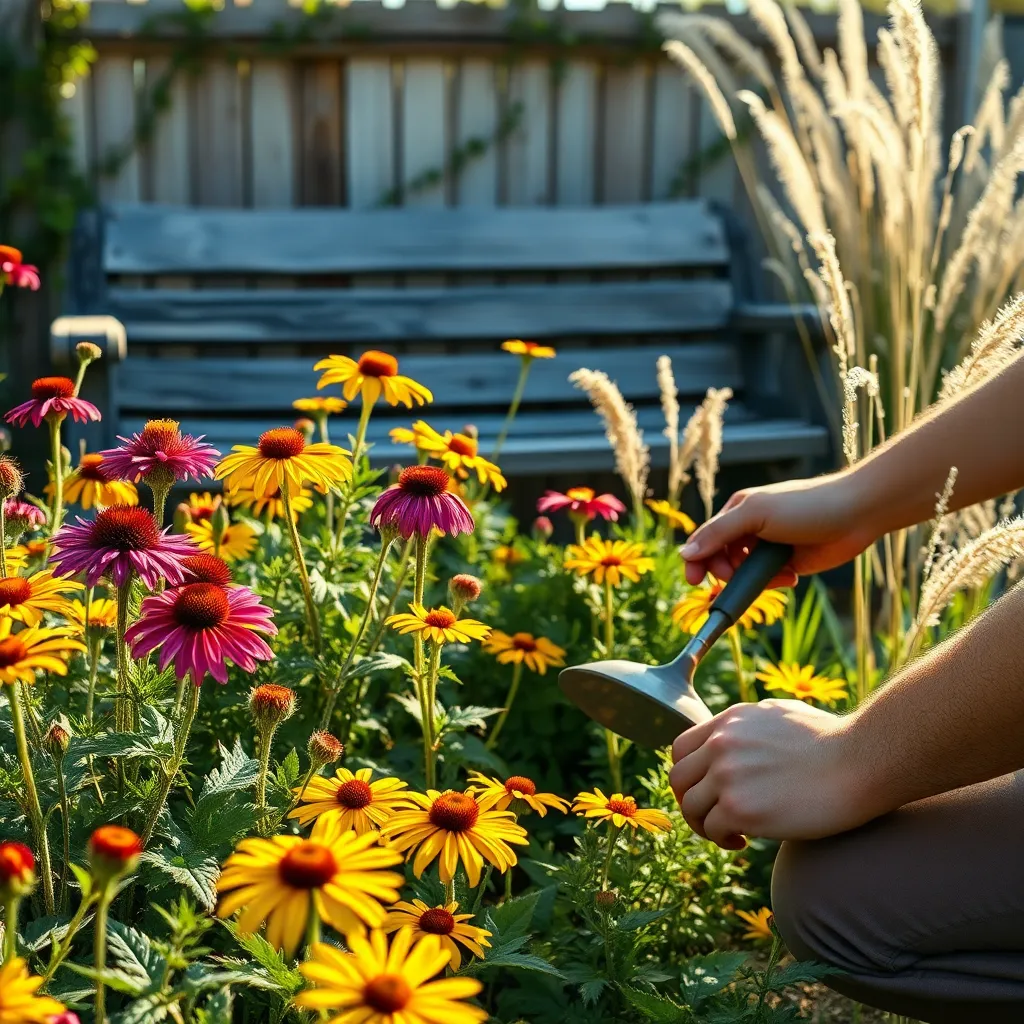
Choosing native plant varieties is a smart strategy for creating a low-maintenance, low-water landscape. These plants are naturally adapted to the local climate, often requiring less irrigation and care than non-native species.
Begin by researching plants that are indigenous to your region, as they will be best suited to thrive in your garden. Consider using a mix of trees, shrubs, and perennials to provide year-round interest and habitat for local wildlife.
When planting natives, pay attention to their specific soil and sunlight needs to ensure they flourish. Many native plants prefer well-draining soil and may not require fertilization, making them ideal for sustainable gardening.
For beginners, start with easy-to-grow native species like coneflower or black-eyed Susan, which are both drought-tolerant and visually appealing. More experienced gardeners might experiment with a variety of native grasses, such as little bluestem, to add texture and movement to the garden.
To maintain your native plant garden, monitor watering during prolonged dry spells but avoid overwatering. Mulching around the base of plants can help retain moisture and reduce weed competition, making your garden even more self-sufficient.
Limit Lawn Areas Significantly

Reducing lawn areas significantly can transform your garden into a sustainable and attractive landscape. Lawns tend to be high-maintenance and water-hungry, making them less ideal for those seeking a low-maintenance garden.
Consider replacing parts of your lawn with drought-tolerant ground covers such as creeping thyme or sedum. These plants require far less water than traditional grass and add a lush, green appearance without the need for constant mowing.
Instead of grass, create walkways or patios using permeable materials like gravel or flagstone. These alternatives are not only water-efficient but also help prevent soil erosion and can enhance the overall aesthetic of your garden.
For a more advanced approach, integrate a variety of ornamental grasses in your landscape. Ornamental grasses such as blue fescue and fountain grass are both beautiful and low-maintenance, thriving in well-drained soil with minimal irrigation.
Select Permeable Hardscape Materials
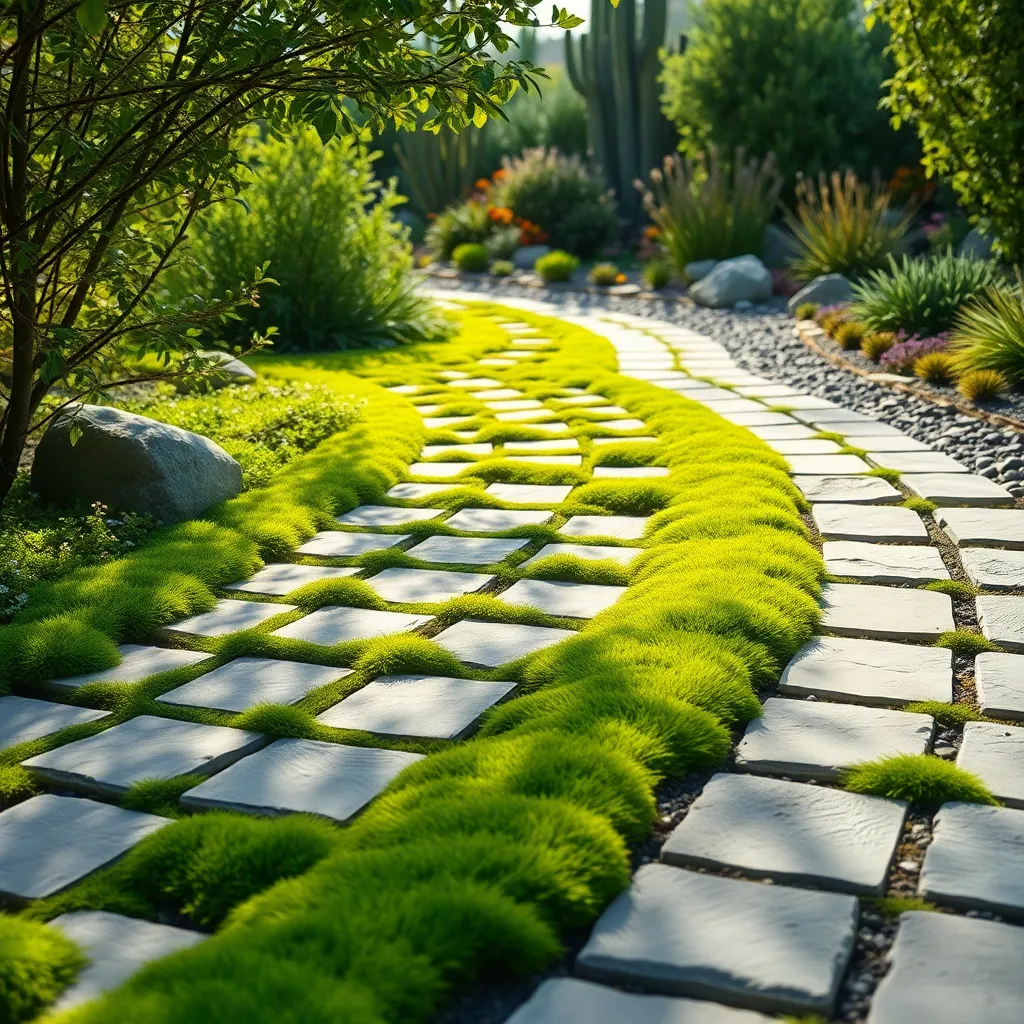
Incorporating permeable hardscape materials into your garden design is a smart way to manage water efficiently. These materials allow rainwater to seep through, reducing runoff and promoting soil health.
Consider using options like gravel, decomposed granite, or permeable pavers for pathways and patios. These materials not only help in water management but also add a rustic charm to your landscape.
Gravel is easy to install and maintain, making it an excellent choice for beginners. For a more polished look, permeable pavers come in a variety of colors and designs, offering both functionality and aesthetic appeal.
When installing these materials, ensure a well-compacted base to prevent shifting and maintain stability. Advanced gardeners might want to incorporate a layer of landscape fabric beneath these materials to further prevent weed growth.
It’s essential to regularly inspect your permeable surfaces to keep them functioning optimally. By doing so, you’ll ensure your pathways and patios remain both beautiful and effective at managing water.
Group Plants with Similar Needs
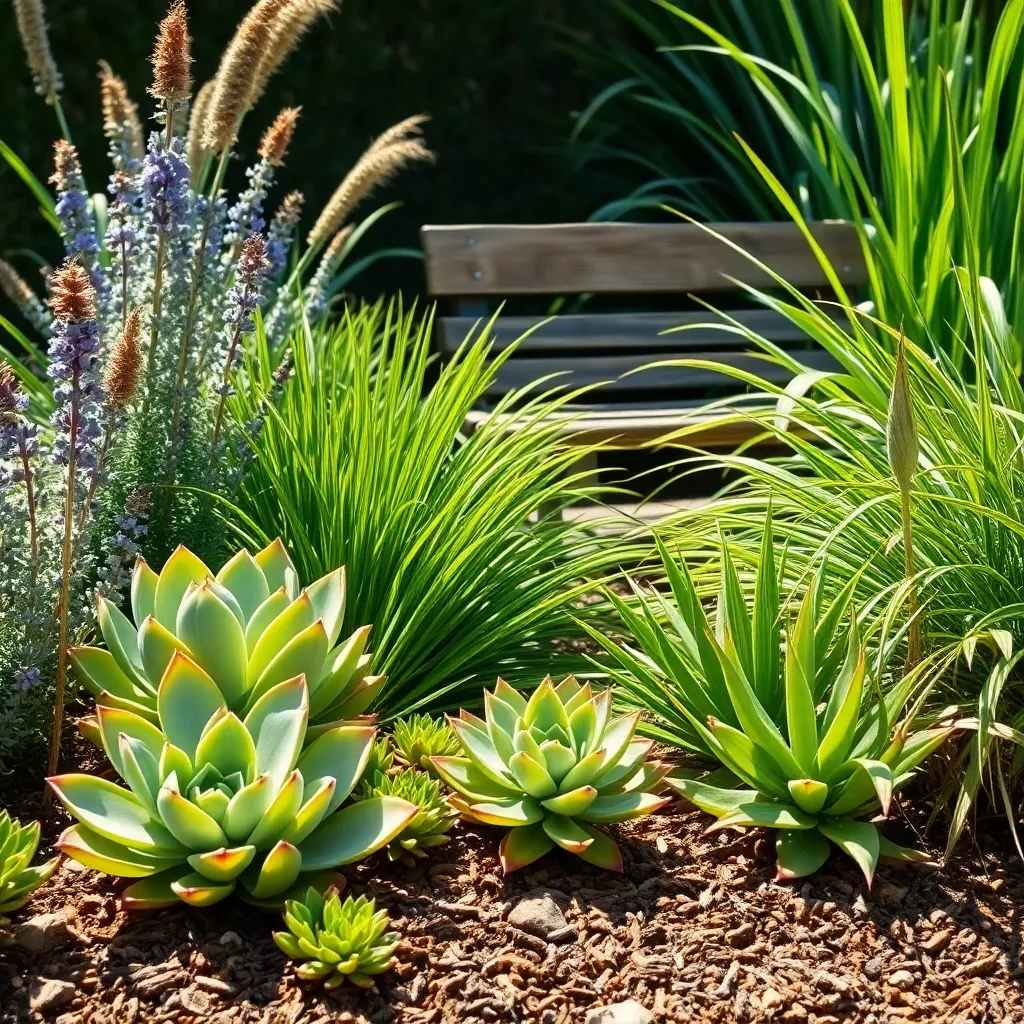
Grouping plants with similar needs is a strategic approach to creating a low-maintenance garden. This method reduces the time and effort needed for watering, fertilizing, and other care activities, as plants that thrive under the same conditions will flourish together.
Start by identifying plants that require similar sunlight exposure, such as full sun or partial shade. Full sun plants like lavender and rosemary thrive with at least six hours of direct sunlight, while shade-loving plants such as hostas prefer less intense light conditions.
Consider the soil preferences of your plants as well. Many drought-tolerant plants like succulents and ornamental grasses prefer well-draining soil, which can be achieved by mixing sand or perlite into your garden bed.
Watering needs are another crucial factor when grouping plants. Plants like sedum and yarrow are excellent companions as they both require minimal watering, while more water-dependent plants should be grouped separately to avoid overwatering.
Utilize Rain Barrels for Watering
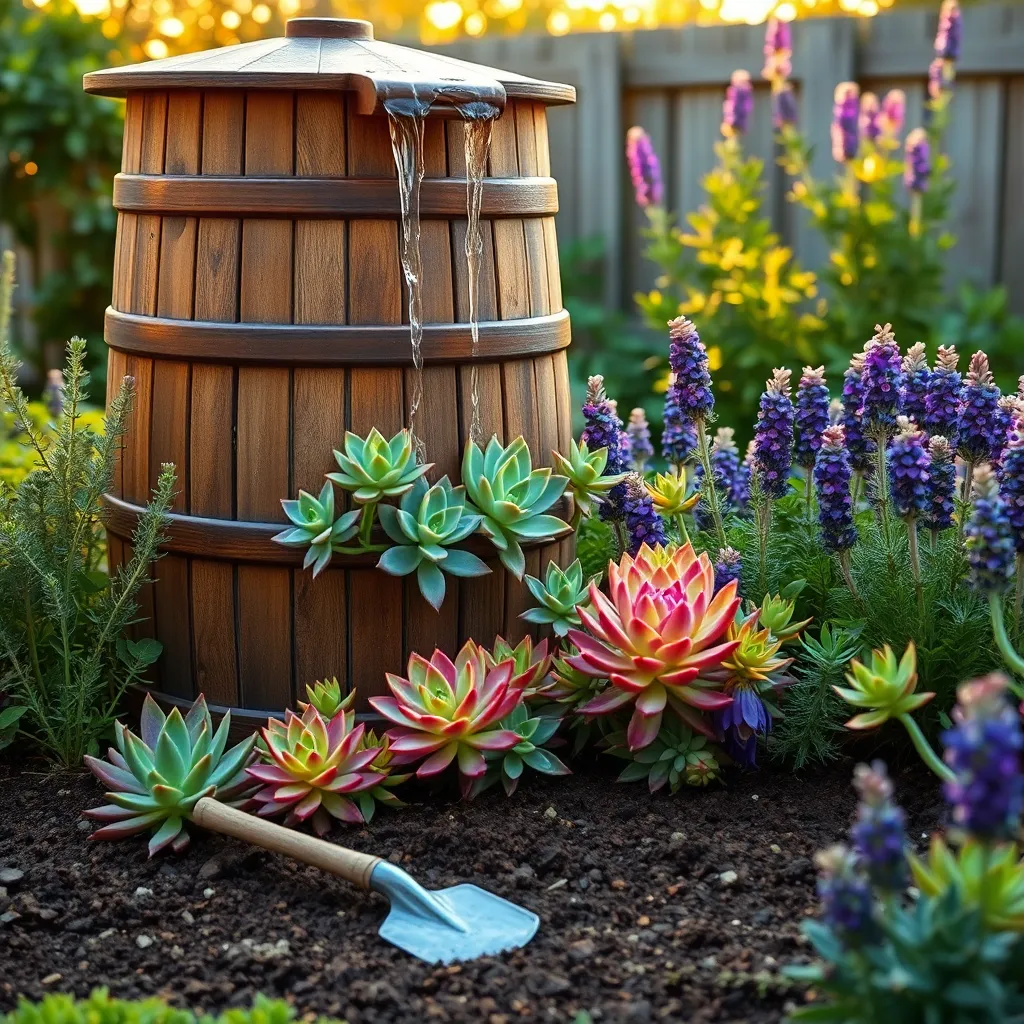
Rain barrels are an excellent way to collect and store rainwater for use in your garden, making your landscaping efforts more sustainable. Installing a rain barrel is simple and can be done by connecting it to your downspout to capture runoff from your roof.
Once your rain barrel is in place, you’ll have a ready supply of chemical-free water that’s perfect for your plants. This is especially beneficial during dry periods, as it reduces reliance on municipal water sources and ensures your garden remains lush.
When using rainwater, it’s important to remember that not all plants require the same amount of moisture. Adjust your watering technique by grouping plants with similar water needs together, which optimizes the use of your stored rainwater.
For those with larger gardens, consider linking multiple rain barrels to increase your storage capacity. This can be a simple DIY project involving a series of barrels connected with hoses or pipes, allowing you to maximize rainwater collection without needing additional space.
Mulch Heavily to Retain Moisture
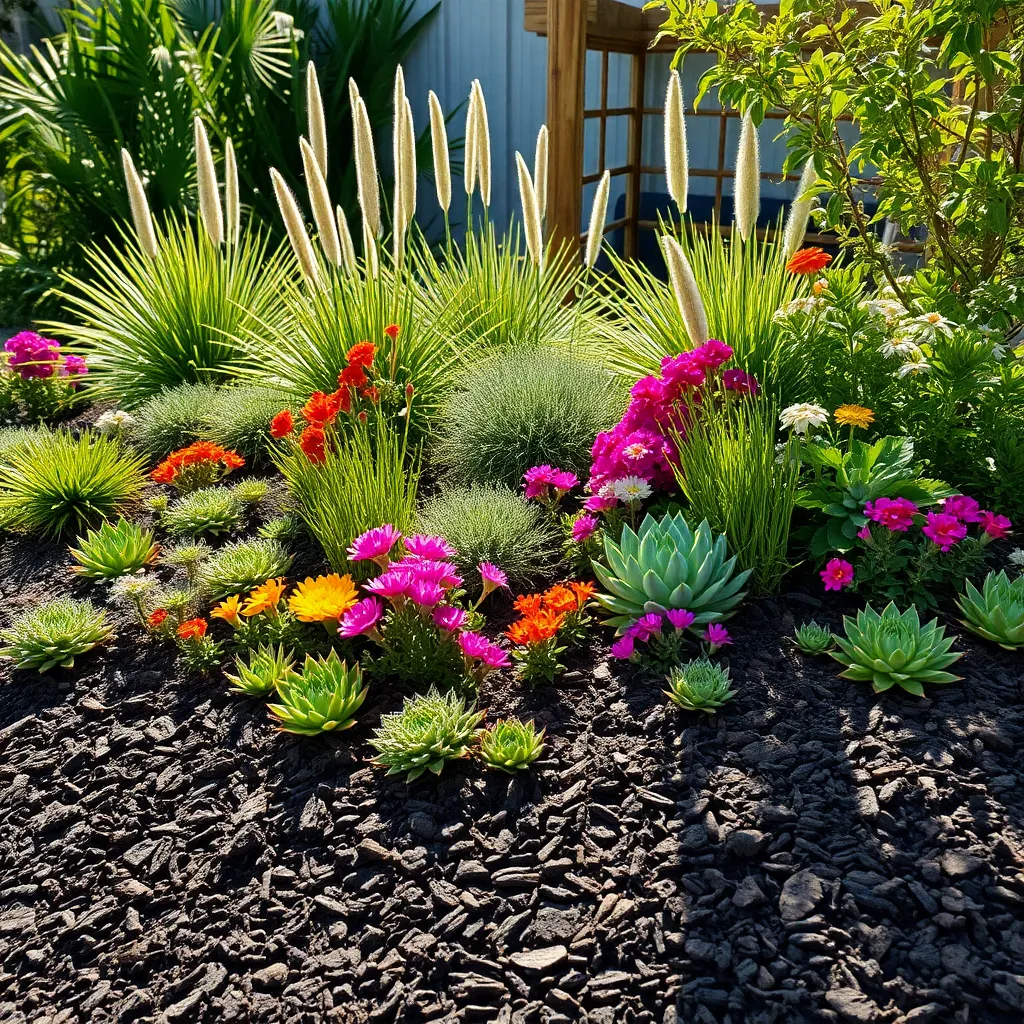
Mulching is one of the most effective strategies for retaining moisture in your garden, reducing the need for frequent watering. By covering the soil with a thick layer of organic mulch, such as shredded bark, straw, or wood chips, you can significantly minimize evaporation.
Not only does mulch help conserve water, but it also suppresses weeds that compete with your plants for moisture. Choose a mulch type that suits your garden’s aesthetic and practical needs, ensuring it’s applied in a layer about 2-4 inches thick.
In addition to moisture retention, mulch helps regulate soil temperature, protecting plant roots from extreme heat. This is especially beneficial for young plants and those that are drought-sensitive, providing a buffer against temperature fluctuations.
For gardeners looking for more advanced techniques, consider using a combination of organic and inorganic mulches. Inorganic options like pebbles or landscape fabric can be used in areas where you want long-term coverage without the need for regular replenishment.
Conclusion: Growing Success with These Plants
In exploring the 10 low-maintenance, low-water landscaping ideas, we’ve uncovered essential concepts that transcend into nurturing relationships. Just as succulents thrive with minimal attention, relationships flourish when nurtured consistently, albeit simply. Mulching parallels building a strong foundation, while native plants symbolize embracing individuality. Incorporating hardscapes teaches us to value the solid structures in our lives, whereas reducing lawn areas encourages letting go of the unnecessary. Efficient irrigation mirrors mindful communication, and gravel gardens remind us of the beauty in simplicity. Vertical gardens inspire growth, xeriscaping promotes resilience, and smart technology integration demonstrates the harmony of innovation and tradition.
To immediately apply these insights, choose one relationship area to focus on this week—perhaps improving communication or appreciating shared strengths—and take a small step towards enhancing it. As you embark on this journey, remember to bookmark this article for future inspiration and guidance. Relationships, like gardens, require patience and care, but with thoughtful effort, they can blossom beautifully over time. By implementing these strategies, you are laying the groundwork for a resilient and thriving relationship. Save this article to revisit these ideas and continue cultivating the love and connection you desire.







